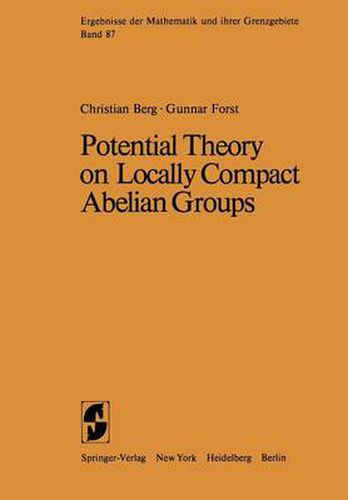Readings Newsletter
Become a Readings Member to make your shopping experience even easier.
Sign in or sign up for free!
You’re not far away from qualifying for FREE standard shipping within Australia
You’ve qualified for FREE standard shipping within Australia
The cart is loading…






This title is printed to order. This book may have been self-published. If so, we cannot guarantee the quality of the content. In the main most books will have gone through the editing process however some may not. We therefore suggest that you be aware of this before ordering this book. If in doubt check either the author or publisher’s details as we are unable to accept any returns unless they are faulty. Please contact us if you have any questions.
Classical potential theory can be roughly characterized as the study of Newtonian potentials and the Laplace operator on the Euclidean space JR3. It was discovered around 1930 that there is a profound connection between classical potential 3 theory and the theory of Brownian motion in JR . The Brownian motion is determined by its semigroup of transition probabilities, the Brownian semigroup, and the connection between classical potential theory and the theory of Brownian motion can be described analytically in the following way: The Laplace operator is the infinitesimal generator for the Brownian semigroup and the Newtonian potential kernel is the integral of the Brownian semigroup with respect to time. This connection between classical potential theory and the theory of Brownian motion led Hunt (cf. Hunt [2]) to consider general potential theories defined in terms of certain stochastic processes or equivalently in terms of certain semi groups of operators on spaces of functions. The purpose of the present exposition is to study such general potential theories where the following aspects of classical potential theory are preserved: (i) The theory is defined on a locally compact abelian group. (ii) The theory is translation invariant in the sense that any translate of a potential or a harmonic function is again a potential, respectively a harmonic function; this property of classical potential theory can also be expressed by saying that the Laplace operator is a differential operator with constant co efficients.
$9.00 standard shipping within Australia
FREE standard shipping within Australia for orders over $100.00
Express & International shipping calculated at checkout
This title is printed to order. This book may have been self-published. If so, we cannot guarantee the quality of the content. In the main most books will have gone through the editing process however some may not. We therefore suggest that you be aware of this before ordering this book. If in doubt check either the author or publisher’s details as we are unable to accept any returns unless they are faulty. Please contact us if you have any questions.
Classical potential theory can be roughly characterized as the study of Newtonian potentials and the Laplace operator on the Euclidean space JR3. It was discovered around 1930 that there is a profound connection between classical potential 3 theory and the theory of Brownian motion in JR . The Brownian motion is determined by its semigroup of transition probabilities, the Brownian semigroup, and the connection between classical potential theory and the theory of Brownian motion can be described analytically in the following way: The Laplace operator is the infinitesimal generator for the Brownian semigroup and the Newtonian potential kernel is the integral of the Brownian semigroup with respect to time. This connection between classical potential theory and the theory of Brownian motion led Hunt (cf. Hunt [2]) to consider general potential theories defined in terms of certain stochastic processes or equivalently in terms of certain semi groups of operators on spaces of functions. The purpose of the present exposition is to study such general potential theories where the following aspects of classical potential theory are preserved: (i) The theory is defined on a locally compact abelian group. (ii) The theory is translation invariant in the sense that any translate of a potential or a harmonic function is again a potential, respectively a harmonic function; this property of classical potential theory can also be expressed by saying that the Laplace operator is a differential operator with constant co efficients.